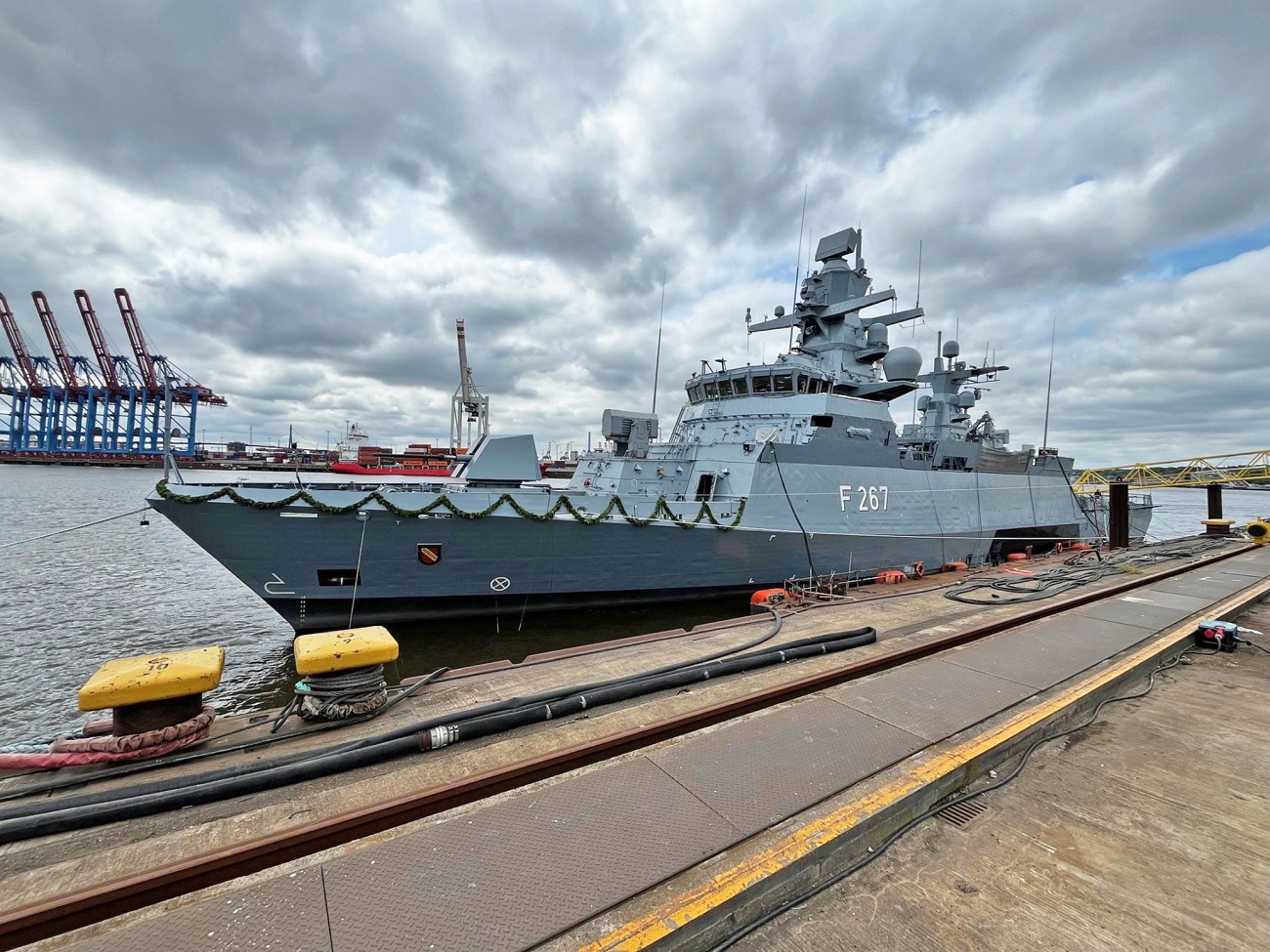The German Navy has christened the Karlsruhe, the third ship from the second batch of its K130 Braunschweig class (sometimes Korvette 130) corvettes, at the Blohm+Voss shipyard in Hamburg, Germany. Karlsruhe’s construction started in 2020 and later laid down on 6 October 2020 by Lürssen-Werft in Bremen. In September 2022 it was reported that increasing difficulties in integrating the command and control systems for the Batch 2 ships had resulted in a cost growth of 401 million Euros and at least a two year delay for the completion of the lead Batch 2 vessel, and potentially cascading delays for the next two ships in the Batch 2 program as well. The corvettes are scheduled to be fully operational by 2025, with comprehensive crew training and naval systems and technologies implementation handled by ship developers, NVL Group, ThyssenKrupp Marine Systems, and German Naval Yards Kiel.
The K130 Braunschweig class (sometimes Korvette 130) is Germany’s newest class of ocean-going corvettes. Five ships have replaced the Gepard-class fast attack craft of the German Navy. Karlsruhe (F267) is the eighth ship of the Braunschweig-class corvette of the German Navy. The decision was in response to NATO requirements expecting Germany to provide a total of four corvettes at the highest readiness level for littoral operations by 2018. They feature reduced radar and infrared signatures, and will be equipped with two helicopter UAVs for remote scouting. The German Navy ordered a first batch of two UMS Skeldar V-200 systems for the use on the Braunschweig-class corvettes. Its two 14.8-megawatt diesel engines allow it to reach a maximum speed of 30 miles (48 kilometers) per hour, with a range of 4,600 miles (7,400 kilometers) at 17 miles (28 kilometers) per hour.

The ships were not built at a single shipyard; sections were constructed at different locations at the same time and later married together. K130 Braunschweig class do not have an executive officer. Traditionally, in the German Navy, this was used as a rule to classify a vessel as a boat, not a ship. The German Navy stated that these corvettes will be called ships nonetheless because of their size, armament, and endurance. The commanding officer wields the same disciplinary power as a German Army company commander, not that of a battalion commander as is the case with the larger German warships such as frigates. However, in size, armament, protection, and role, these corvettes resemble modern antisurface warfare light frigates, the main difference being the total absence of any antisubmarine warfare related sensors or weapons.
The Karlsruhe, boasts an impressive array of sensors and processing systems, making it a formidable force on the seas. Equipped with the Cassidian TRS-3D multifunction Passive electronically scanned array C-Band radar, 2 navigation radars, the MSSR 2000 i IFF system, MIRADOR electro-optical sensors, and the UL 5000 K ESM suite, the Karlsruhe ensures comprehensive situational awareness. In terms of electronic warfare and decoys, the vessel is outfitted with two TKWA/MASS decoy launchers and the UL 5000 K ECM suite. It is armed with one OTO Melara 76 mm gun and two Mauser BK-27 autocannons for firepower. For anti-ship operations, it carries four RBS-15 Mk.3 anti-ship missiles and two mine racks carrying 34 naval mines Mk 12 each. Additionally, its close-in defense is reinforced by two RAM Block II launchers, each loaded with 21 missiles, providing robust protection against incoming threats. \















